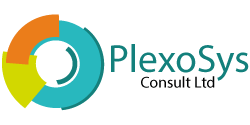Introduction
NGOs and Non-profit organisations are often set up to do good in the world and their sole purpose is to help those in need. For this reason, they can sometimes overlook systems and how they can best be put in place.
With the right systems, Non-profits can reach scale and improve their operations - saving time, money, and efforts for all stakeholders.
There are many benefits of using systems in NGOs and Non-profit organisations including faster business processes with less human involvement, improved operational efficiency with less redundant tasks, improved outcomes through elimination of human error, better decision making with more data points available in an automated system than when relying on manual analog methods.
In this blog, we'll explore some of the most important systems that NGOs and Non-profit organisations need in order to succeed.
1. Project Management System
NGOs and Non-profits are widely known for running a number of projects. Project management is an important task that needs to be done in order for the organisation to run smoothly.
It can be challenging when existing projects are getting bigger, more projects are being launched at nearly the same time and resources (time and money) becoming scarce.
This is where a project management system would come into play as it can automate and aid in tracking task progress, coordination, communication, monitoring and reporting, resource allocation and optimization.
2. Grants Management System
A well-functioning grants management system is essential for an NGO because it helps automate the entire process of managing grants which saves time and money for the organisation.
This system streamlines the entire grant process from managing applications to tracking when the funds will be available, and when and where they need to be allocated.
Non-profit organisations with an automated grants management system are able to save hours per week simply by having access to information at their fingertips instead of constantly checking back on their emails.
3. Member Management System
The main purpose of a member management system for Non Profit Organisations is to keep track of the organisation's members and their activity. It can help increase donations, volunteer hours, event attendance and more.
The system keeps track of memberships and dues payments in a database, categorises donations, and makes it simple to create reports for specific time periods.
It also sends out automated reminders for recurring payments to ensure that members pay on time.
4. Procurement System
Most non-profit organisations have a limited operating budget and as a result they need to be as efficient as possible with their funds. In order to do so, they need a procurement system that will help them save money, time and effort when it comes to the procurement process.
A procurement system enables organisations to systemise and automate the process of purchasing products and services as well as inventory management.
It aids in the management of all procurement-related processes, including, sending out purchase requisitions, making purchase orders, vendor selection and management, acceptance of delivered goods/services and examining invoices.
5. Human Resource Management System
NGOs and Non-profits are human-centered organisations that work for the public good, trying to improve communities and countries. Human resource management is one of the most important elements in these organizations.
Effective human resource management helps organisations accomplish their goals by employing people with qualified skills, managing their work life and providing training.
Staffing, talent acquisition, recruiting, performance management, benefits administration, and employee retention are all part of a human resource management system.
6. Document Management System
Without a doubt, non-profit organisations generate a significant amount of paperwork and important documents across all departments, ranging from grant applications to policy documents, corporate sponsorship contracts, non-disclosure agreements, compliance documents, vendor agreements, expense reporting, and more.
A document management system receives, tracks, manages, digitizes, and stores documents in order to reduce paper usage, and it is a massive improvement over simple file storage on your computer.
7. Accounting and Finance System
NGOs and Non-profits are usually dependent on donations which is why they need to give donors an assurance that their money will be used wisely.
As a result, accounting is one of the most important areas in non-profit organisations. It is concerned with the process of keeping track of financial transactions, where they have come from and where they have gone.
An accounting and finance system must be able to capture accurate data, provide accurate conclusions for decision making, be cost efficient and highly organised with low risk to demonstrate the organisation's current financial position while projecting future trends.
8. A Comprehensive System
The ideal situation would be to combine all of the above systems into a single mega-organisation-wide system. With all of these systems working in tandem, your non-profit organization will make a concerted effort to achieve its mission.
This is best accomplished by having it custom built to meet your specific needs and requirements, as each organisation is unique, and it is also the least expensive option when compared to having all of the systems built separately.

